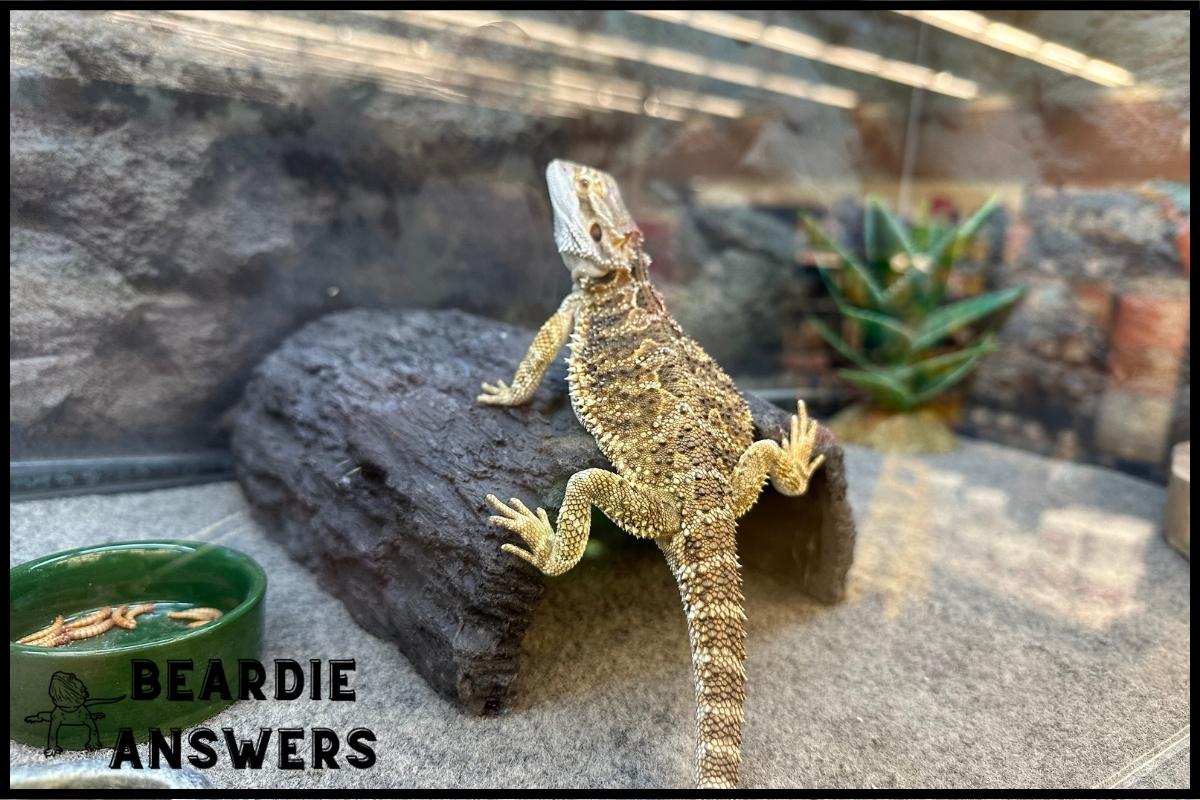Healthy bearded dragon feet are an essential part of their overall health. They should have all five toes, and their nails should be trimmed regularly. Additionally, their feet should be free from swelling, redness, and other signs of inflammation or infection. It’s also essential to provide a suitable substrate that won’t cause foot injuries or infections.
What You'll Learn
Signs Of A Healthy Foot
The foot is one of the most overlooked parts of a bearded dragon’s anatomy. It contains five toes, each with specialized claws that act as anchors when climbing and gripping surfaces. But few people know what healthy feet look like or how to go about proper foot hygiene for their pet reptiles.
To understand this part of your beardie’s body fully, it pays to have an understanding of toe anatomy and normal claw and toe appearances. Toes are essential components in helping bearded dragons move gracefully on land, so keeping them well cared-for is important. Each digit has its own unique shape which provides different functions in terms of balance, traction or propulsion while walking or running across uneven terrain.
Healthy nails should be curved slightly inward towards the toes, rather than outward away from them; any signs of swelling or discoloration can indicate fungal infections or other underlying issues. Bearded dragons also require regular cleaning of their feet in order to prevent infection and discomfort caused by bacteria build up between the scales on their skin.
A mild solution made from diluted vinegar mixed with warm water works best for killing bacteria without damaging delicate skin tissue – just make sure to rinse off thoroughly after use! Knowing these basics will help you keep your little reptilian friend comfortable and happy as they explore their terrarium environment safely…and confidently transition into the next section about ‘normal claw and toe appearances’.
Normal Claw And Toe Appearances
Now that we have discussed the signs of a healthy foot, let’s move on to normal claw and toe appearances. Healthy bearded dragon feet should display several characteristics in order for them to be considered healthy:
- Claw growth – Claws should grow at an even rate with no sharp edges or points.
- Toe structure – The toes should all be intact and match each other in size and shape with no evidence of swelling or discoloration.
- Nail color and shape – All five nails should have a typical light tan hue and curved nail tips instead of being overly long or short.
These factors are important when evaluating if your beardie’s feet are functioning properly. If any abnormalities occur, it is best to take your pet to the veterinarian so they can diagnose the problem correctly and provide appropriate treatment.
Moving forward, we will discuss what is considered typical nail color and shape for a bearded dragon.
Typical Nail Color And Shape
Bearded dragons typically have five toes on each foot, which are protected by healthy nails. The shape of the toe and nail can vary depending on the individual dragon’s shedding habits; however, they generally remain short and curved inwards.
In terms of coloration, bearded dragon claws usually range from pale yellow to dark brown or black. It is important to monitor your pet’s feet regularly for any signs of discoloration or swelling that could indicate a health issue such as an infection.
If you notice anything abnormal, it is advised that you seek veterinary care right away. Taking good care of your beardie’s feet will help keep them comfortable and mobile throughout their life.
Moving onto common foot health issues should be addressed with appropriate treatments to minimize pain and ensure long-term wellbeing.
Common Foot Health Issues
Bearded dragons are prone to foot health issues, both bacterial and fungal infections. Bacterial infections usually present as redness or swelling around the toe area, while fungal infections may cause discoloration of the nails and scales. In either case, it is important for owners to take their dragon to an experienced reptile vet if they notice any changes in their pet’s feet.
It is also important that bearded dragon owners monitor their pets’ feet regularly for signs of injury or infection. This includes checking for cuts, scratches, scabs, sores, bumps, blisters, fungus growths, discolorations and other abnormalities in the skin or nails on a regular basis.
If anything seems out of place or appears abnormal in any way then it should be checked out by a professional right away.
With proper care and attention given to your bearded dragon’s feet you can help prevent health complications before they arise. However, if something does appear off with your pet’s feet it is essential that you seek veterinary advice immediately so they can diagnose the problem quickly and accurately. From there appropriate treatment plans can be put into action to ensure your beloved beardie stays healthy and happy!
Moving forward let’s explore how to better detect problems in bearded dragons before they become severe medical concerns.
Diagnosing Problems In Bearded Dragons
Bearded dragons are hardy reptiles, but they can experience a variety of foot problems that require treatment. Diagnosing these issues requires careful observation and an understanding of possible causes.
From dietary factors to environmental concerns, there is much to factor in when evaluating the condition of your bearded dragon’s feet:
- Check for signs of swelling or discoloration on the toes or nails.
- Look for claw malformations such as missing digits or fused claws.
- Ensure all five toes are present and accounted for on each foot.
- Make sure no cuts, abrasions, lesions, blisters, or other skin abnormalities exist.
A thorough examination will help you determine if any underlying health conditions may be causing your beardie’s foot troubles—it is always important to consult with an experienced reptile vet before beginning treatment!
Treatment Options For Foot Problems
When a bearded dragon is having foot problems, it can be difficult to determine the cause. Common issues may include foot fungus, dietary imbalances and other infections. Treatment for these conditions varies greatly depending on the severity of the problem.
Below is a table outlining some potential treatments for common foot problems in bearded dragons:
| Problem | Possible Treatments |
|---|---|
| Foot Fungus | Antifungal medication, UVB light |
| Dietary Imbalance | Vitamin supplements, food variety |
| Other Infections | Antibiotics or surgery |
It’s important to consult with an experienced reptile veterinarian if your beardie has any kind of foot issue. Your vet will be able to provide you with specific instructions based on their diagnosis as well as recommend safe products for treatment. If left untreated, many feet-related illnesses have the potential to become serious health concerns for your pet.
In order to avoid such risks, pay close attention to your bearded dragon’s feet and seek veterinary care immediately if there are any signs of swelling or discoloration. With proper care and regular monitoring, you can ensure that your beardie stays healthy and happy!
Conclusion
The health of a bearded dragon’s feet is essential for its well-being. If you see any signs of swelling, discoloration, or other abnormalities in your pet’s toes or nails, it’s important to take them to the vet right away.
With proper care and early diagnosis, most foot issues can be resolved quickly and easily. It’s always good to keep an eye out for any signs of trouble with your bearded dragon’s feet – after all, we know how painful it can be when something goes wrong with our own!
Luckily, with regular inspections and visits to the veterinarian as needed, you’ll be able to ensure that your bearded dragon has happy and healthy feet for many years to come.

Hi! My name is Bryan, I am the “one behind the words” here are BeardieAnswers.com. I believe that providing quality care and nutrition is the best way to ensure the health of your pet. Every beardie is special and deserves the best care and attention. If you have questions about your bearded dragon, please don’t hesitate to ask! View My Full Author Page




